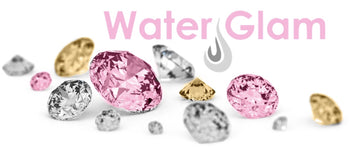About Drinking Water
There is luxury also in the bottled water market. Premium quality waters are attractive because of their exclusive packaging. There are special, exotic waters originating from untouched places, that are beneficial to health due to their special mineral content, crystal clearness, and no sign of dirt in them whatsoever. There are handmade bottles, embellished with Swarovski crystals, specially shaped and exclusively designed. In addition to quality water within them, we also buy the touch and the sight of these beautiful glasses, and the special feeling that comes with them naturally. The bottle is one of the most visible things we use - it can be beautiful, iconic and sends a message to people about who we are.
Many believe that water has no taste. On the contrary, the minerals in the water cause a different taste in the oral cavity, so their composition determines the taste. The water may be mild, soft, fruity, velvety, powerful, almost or totally bitter, or salty. It suffers change into as many natures as are the different places through which it passes.

Water has a great aroma spectrum. For example, sodium is saline, sulfate is bitter and calcium produces a slightly acid flavor. Higher iron content causes a sour taste, magnesium-rich water is slightly metallic and slightly bitter, while water with very low mineral content will have no metallic taste. The water has particularly good taste when it is in balance with calcium, magnesium, and hydrogen.
For a particular meal, we usually choose wine carefully, but unfortunately, we do not even pay attention to the water chosen or offered to the wine. We believe it is neutral, or we think only of the "still" or "sparkling" category in our personal taste. However, a bad choice can spoil the wine, and harmony is immediately overthrown. That is the reason why it matters what kind of mineral content is in the water we drink for a given wine, but it is also important whether you choose sparkling, gently sparkling, or still water.
For young white wines with low acidity, a sparkling or medium sparkling water is suitable. For high acidity white wines choose still water with a high content of bicarbonate because it brings out the flavor and absorbs acidity. For red wines, only still waters should be added, including those with less salty, less high mineral content, excluding sparkling water. Still water containing few minerals exposes the aroma of the wine and relieves the acids contained therein.
In the case of sweet wines, we let the personal gusto to decide how much the sweet taste is to be emphasized. If you intend to emphasize the sweetness, choose sparkling water, in case you don’t want to, then pick gently sparkling or still water. Sparkling waters enhance the taste sensation, which is best determined by the bubbles. There are very sharp, offensive, aggressive, or fine, tiny, bubbling bubbles filled waters too.
Today, more and more exclusive restaurants, hotels, and gourmet shops offer quality bottled water. But the water-sommelier expression is only encountered today in the world. He is the one who can tell and explain with appropriate indications of what to feel when tasting given water. He can recommend water by its place of origin, or according to the guest’s personal taste to match it with various meals and drinks. The service of water also has its own etiquette, furthermore, in exclusive gastronomy, there is a water menu. Bottled water must be served only in its original bottle, sealed, and opened before the guest. Serve chilled, but not ice-cold, at 9-11 degrees Celsius. It is important that the tumbler - just like the wine glass - must be beautiful, spot-free, and flawless. Of course, an odor of cardboard, detergent, or wipes must be banished from tumblers. Ice making also requires attention, it is not advisable to make ice from chlorine-flavored tap water. More and more, mineral water manufacturers are now offering ice cubes from their own bottled water.

Whatever the attraction, lemon is forbidden fruit in the waters. With its acidity and its volatiles, it kills everything that tastes clean, natural water. Drinking water should also be given away to drink from a stemware. The proper tumbler is 240 millimeters tall with a straight cup. The straight lines of the tumbler tell us that this is not a wine glass. It is easy to be recognized with its tall glass, straight lines, and long stems. Before drinking the water, it is worthwhile to inhale its scent first, then sip a little and run it in the mouth just like a good wine. The water has a character, it must not have an aftertaste. In order to experience mineral water at its best, it is advisable to hand-wash the glasses in warm water with no detergent – so that there is no lingering taste of detergent, so easily perceived given the delicate aromas of water.

